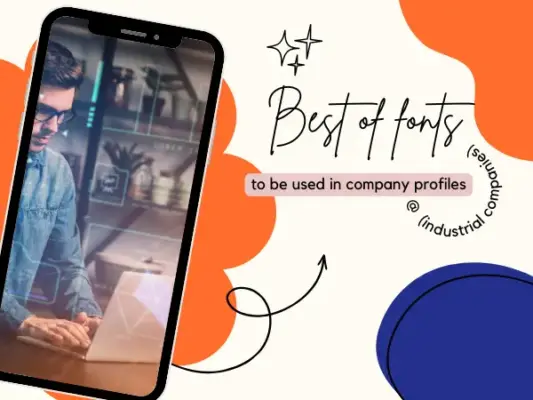
Creating a company profile for an industrial company requires a professional and robust design that reflects the company’s strength, reliability, and technical expertise. The choice of font plays a crucial role in achieving this. Here are some of the best fonts that can be used in company profiles for industrial companies, along with their key characteristics:
1. Roboto
– Characteristics: Modern, clean, and highly legible.
– Usage: Suitable for both headings and body text due to its versatile design.
– Why It Works: Roboto offers a perfect blend of geometric shapes and open curves, making it a great choice for presenting technical information clearly and professionally.
2. Montserrat
– Characteristics: Bold, contemporary, and versatile.
– Usage: Ideal for headings, subheadings, and highlights.
– Why It Works: Montserrat’s strong presence and clean lines make it suitable for drawing attention to key sections of the company profile while maintaining readability.
3. Lato
– Characteristics: Warm, friendly, and easy to read.
– Usage: Works well for body text and subheadings.
– Why It Works: Lato’s balanced proportions and clear letterforms ensure a pleasant reading experience, which is essential for detailed company descriptions and technical content.
4. Open Sans
– Characteristics: Neutral, straightforward, and legible.
– Usage: Excellent for both headings and body text.
– Why It Works: Open Sans is designed for readability on both digital and print media, making it a reliable choice for comprehensive company profiles that might be shared in various formats.
5. Helvetica
– Characteristics: Classic, neutral, and highly readable.
– Usage: Best for headings, subheadings, and captions.
– Why It Works: Helvetica’s timeless design and wide acceptance in professional settings make it a safe and effective choice for conveying trust and stability.
6. Arial
– Characteristics: Clean, simple, and highly legible.
– Usage: Suitable for body text and headings.
– Why It Works: Arial’s straightforward design ensures clarity and readability, which is crucial for presenting detailed technical and corporate information.
7. Futura
– Characteristics: Geometric, modern, and professional.
– Usage: Ideal for headings and highlights.
– Why It Works: Futura’s modern and technical look aligns well with the industrial sector, making it an excellent choice for emphasizing important sections and data points.
8. DIN
– Characteristics: Technical, precise, and clear.
– Usage: Perfect for headings, subheadings, and technical specifications.
– Why It Works: Originally designed for industrial use, DIN’s clear and technical appearance makes it highly suitable for company profiles in the industrial sector.
9. Univers
– Characteristics: Neutral, balanced, and highly legible.
– Usage: Works well for both headings and body text.
– Why It Works: Univers’s versatility and professional appearance make it a reliable choice for creating a cohesive and polished company profile.
10. Proxima Nova
– Characteristics: Modern, clean, and versatile.
– Usage: Suitable for headings, subheadings, and body text.
– Why It Works: Proxima Nova’s modern design and excellent readability make it a popular choice for corporate documents, ensuring a professional and approachable look.
Tips for Using Fonts in Company Profiles
– Consistency: Use no more than two or three fonts to maintain a cohesive and professional appearance. Typically, one font for headings and another for body text is sufficient.
– Hierarchy: Establish a clear typographic hierarchy by using different weights and sizes of the chosen fonts. This helps guide the reader’s eye through the document.
– Readability: Ensure that the font size and spacing are appropriate for easy reading. Avoid overly decorative fonts that might hinder legibility.
– Brand Alignment: Choose fonts that align with your company’s brand identity. The font should reflect the company’s values and the nature of its industry.
By carefully selecting and applying these fonts, industrial companies can create professional and engaging company profiles that effectively communicate their strengths and capabilities to stakeholders.